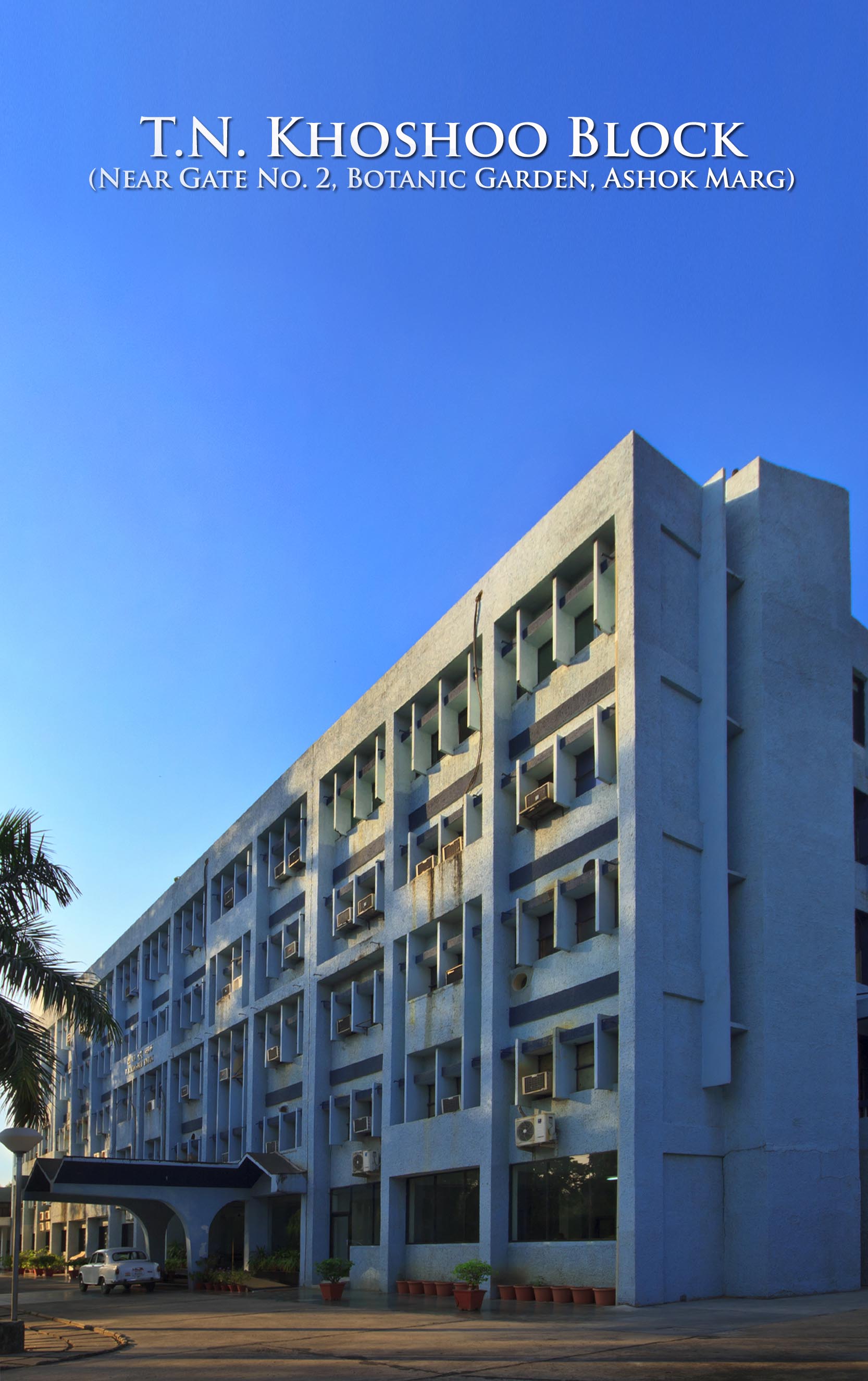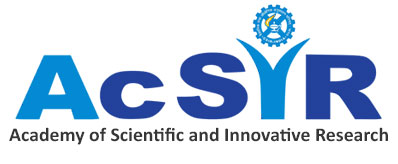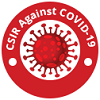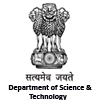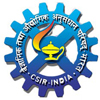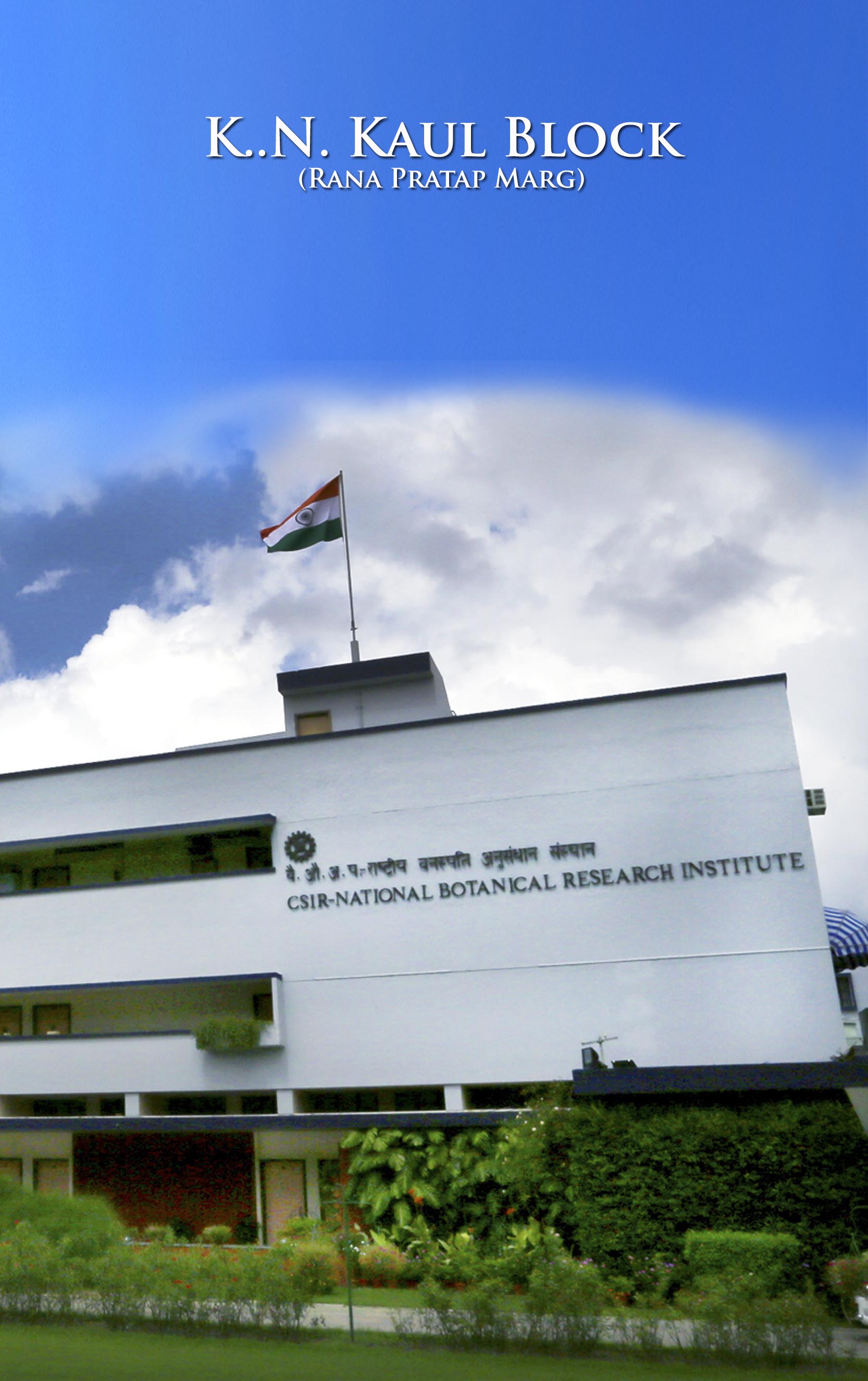

Dr. P.K. Trivedi
Chief Scientist
Research Interests
Dr. Prabodh’s lab has been working in the area of pathway engineering of secondary plant products and environmental biotechnology. Group has carried out gene pyramiding and silencing of genes to enhance flavonoid biosynthesis. His research suggests limitation of single gene in enhancing synthesis of specific molecules and requirement of multiple step manipulation. He demonstrated that flavonol-specific MYB transcription factors regulate flux availability for flavonol biosynthesis and leads to insect resistance. Transgenic tobacco lines co-expressing MYB transcription factor and isoflavone synthase gene developed by him accumulated isoflavonoid being at the highest levels which could be engineered in non-leguminous plants. In addition, flavonoid rich tobacco and tomato showed value addition in relation to bone health improvement in animal model. Recently, he demonstrated involvement of miR858 and associated miPEPin regulation of flavonoid biosynthesis and plant development. To establish biosynthetic pathways for medicinally important molecules, he carried out detailed transcriptome analysis of chemotypes of Withania and poppy and identified genes involved in specific withanolides and papaverine biosynthesis. In the area of environmental biotechnology, through biochemical and genome-wide expression analysis, demonstrated involvement of various processes in detoxification of heavy metals in rice. He identified and utilized genes and miRNAs for development of heavy metal tolerant plants.
Dr. P.K. Trivedi
Chief Scientist
Research Summary
Pathway Elucidation and Engineering of the Secondary Plant Products
– To engineering of non-leguminous plants for biosynthesis and accumulation of isoflavonoids, isolated isoflavone synthase (IFS) gene from a traditional medicinal plant Psoralea corylifolia and expressed in non-leguminous plants. The developed transgenic plants showed significant high accumulation of isoflavones in flower petals however no accumulation was observed id leaf tissue.Transgenic tobacco and tomato plants developed using various transcription factorswith increased biosynthesis and accumulation of the substrate flux for IFS as well as flavonols.
– Global-gene expression and metabolome in different tissues of the transgenic lines of tobacco and tomato suggested role of AtMYB12 in regulation number of pathways, leading to flux availability for phenylpropanoid pathway in general and flavonol biosynthesis in particular. Demonstrated involvement of light associated factors in regulation of flavonoid biosynthesis. The transgenic tobacco lines expressing AtMYB12 showed significant resistance against two major insect pests, S. litura and H. armigera due to enhanced accumulation of rutin and role of rutin for insect resistance has been well validated through artificial miRNA.
– Transgenic tobacco plants developed with co-expression of AtMYB12 and GmIFS showed substantial accumulation of genisteinglyco conjugates to the highest levels that could be engineered in tobacco leaves till date. Estrogen deficient (ovariectomized, Ovx) mice fed with leaf extract from the transgenic plant coexpressingAtMYB12 and GmIFS showed improved bone. Extracts from AtMYB12 expressing flavonol enriched tomato fruit led to the modulation in chondrogenesis to increase bone length in growing animals.
– Established transcriptome sequences of three distinct chemotypes of Withania somnifera (leaf and root) with distinct chemical profiles. Established correlation of transcriptome with metabolic profile and identified genes involved in biosynthesis of specific withanolides. Validated involvement of number of genes in withanolide biosynthesis through Virus Induced Gene Silencing (VIGS) approach. Established a genetic transformation system for Withania somnifera and has characterized important genes involved in biosynthesis of withanolides.
– Established transcriptome of poppy germplasm lines BR086 and pap1 mutant and identified key genes and transcription factors putatively involved in papaverine biosynthesis as well as other alkaloids. Established high frequency somatic embryogenesis and regeneration systems as well as Virus Induced Gene Silencing (VIGS) protocol for functional genomics of poppy.
– Established comprehensive transcriptomes datasets of neem (Azadirahta indica) and identified gene networks involved in azadirachtin biosynthesis pathway.
miRNAs and Associated Factors
– MicroRNAs (miRNAs), small non-coding RNAs, are processed product of primary miRNAs (pri-miRNAs) and regulate target gene expression. Dr. Trivedi’s group has functionally characterized Arabidopsis (Arabidopsis thaliana) miR858a, which putatively targets R2R3-MYB transcription factors involved in flavonoid biosynthesis. Overexpression of miR858a in Arabidopsis led to the down-regulation of several MYB transcription factors regulating flavonoid biosynthesis. In contrast to the robust growth and early flowering of miR858OX plants, reduction of plant growth and delayed flowering were observed in Arabidopsis transgenic lines expressing an artificial miRNA target mimic (MIM858). Furthermore, higher expression of MYBs in MIM858 lines leads to redirection of the metabolic flux towards the synthesis of flavonoids at the cost of lignin synthesis.
– Recent studies suggest that a few pri-miRNAs may encode small peptides, miRNA-Encoded Peptides (miPEPs), however function of these peptides has not been studied in detail. Studies in Dr. Trivedi’s group suggest that pri-miR858a of Arabidopsis thaliana encodes a small peptide, miPEP858a, which plays an important role in regulation of secondary plant product biosynthesis as well as in plant growth and development. Exogenous application of synthetic miPEP858a enhanced the expression of pri-miR858a, leading to modulation in the expression of target genes and other down-stream processes involved in plant growth and development as well as flavonoid biosynthesis.
– CRISPR-based miPEP858a-edited plants developed phenotypes similar to that of mature miR858-edited plants. miPEP858a-edited and miPEP858a overexpressing lines showed altered plant development and accumulated modulated levels of flavonoids due to change in the expression of regulatory and structural genes associated with phenylpropanoid pathway and auxin signaling. Exogenous treatment of synthetic-miPEP858a to the miPEP858a-edited plants complemented phenotypes and the gene function. In addition to miR858a, group is characterizing several other miRNAs through overexpression and developing their knock-out mutants.
Environmental Biotechnology
– The presence of heavy metals in groundwater poses a threat as it not only affects crop productivity but also contaminates food chain. Therefore, it is essential to understand molecular mechanisms underlying uptake, transport and accumulation of As in plants. Group has identified and characterized a number genes involved in heavy metal uptake, accumulation and response in plants.
– Functionally characterized various genes and showed their involvement in heavy metal tolerance, accumulation and transport. Group isolated PC synthase gene from the aquatic plant, Ceratophyllumdemersumand developed transgenic plants. Transgenic plants showed significant enhanced tolerance and accumulation to different heavy metals. Rice transgenic lines expression this PC gene showed significantly reduced arsenic content in grain suggesting that this gene can be used to develop low arsenic accumulating rice varieties. In addition, with transgenic approach, successfully demonstrated that synthetic phytochelatins can be used to enhance accumulation of heavy metal and loids for phytoremediation application.
– Group has studied effect of different heavy metals on genome-wide expression in Arabidopsis and rice. Studies suggest that common as well different metabolic networks operate for detoxification of different heavy metals in plants. Identified miRNAs involved in contrasting arsenic stress response in different rice cultivars.
– Group used Arabidopsis accessions and analyzed at biochemical and molecular levels towards arsenate arsenic stress. On the basis of reduction in root length, accessions were categorized into tolerant and sensitive ones towards arsenic stress. Comparative genome-wide expression and biochemical analyses suggest differential sulphur assimilation mechanism in contrasting natural variation.
Dr. P.K. Trivedi
Chief Scientist
Publications
1. Kumar S, Khare R, Trivedi PK (2019) Arsenic-responsive high-affinity rice sulphate transporter, OsSultr1; 1, provides abiotic stress tolerance under limiting sulphur condition. Journal of Hazardous Materials373:753-762
2. Agarwal AV, Singh D, Dhar YV, Michael R, Gupta P, Chandra D, Trivedi PK (2018) Virus-Induced Silencing of key genes leads to differential impact on withanolide biosynthesis in medicinal plant, Withania somnifera. Plant Cell and Physiology 59, 262-274
3. Bhatia C, Pandey A, Gaddam SR, Hoecker U, Trivedi PK (2018) Low temperature enhanced flavonol synthesis requires light-associated regulatory components in Arabidopsis thaliana. Plant Cell and Physiology 59:2099-2112.
4. Khare R, Kumar S, Shukla T, Ranjan A, Trivedi PK (2017) Differential sulphur assimilation mechanism regulates response of Arabidopsis thaliana natural variation towards arsenic stress under limiting sulphur condition. Journal of Hazardous Materials 337:198-207
5. Sharma D, Tiwari M, Pandey A, Bhatia C, Sharma A, Trivedi PK (2016) MicroRNA858 is a potential regulator of phenylpropanoid pathway and plant development in Arabidopsis. Plant Physiology 171: 944-959
6. Gupta P, Goel R, Agarwal AV, Asif MH, Sangwan NS, Sangwan RS, Trivedi PK (2015) Comparative transcriptome analysis of different chemotypes elucidates withanolide biosynthesis pathway from medicinal plant Withaniasomnifera. Scientific Reports 5:18611
7. Pandey A, Misra P, Khan MP, Swarnkar G, Tewari MC, Bhambhania S, Trivedi R, Chattopadhyay C, Trivedi PK (2014) Coexpression of Arabidopsis transcription factor, AtMYB12, and soybean isoflavone synthase, GmIFS1, genes in tobacco leads to enhanced biosynthesis of isoflavones and flavonols resulting in osteoprotective activity. Plant Biotechnology Journal 12:69-80
8. Tiwari M, Sharma D, Dwivedi S, Singh M, Tripathi RD, Trivedi PK (2014) Expression in Arabidopsis and cellular localization reveal involvement of rice NRAMP, OsNRAMP1, in arsenic transport and tolerance. Plant Cell Environment 37:140-152 (Corresponding author) Impact Factor 5.415
9. Kumar S, Asif MH, Chakrabarty D, Tripathi RD, Dubey RS, Trivedi PK (2013) Expression of a rice Lambda class of Glutathione S-transferase, OsGSTL2, in Arabidopsis provides tolerance to heavy metal and other abiotic stresses. Journal of Hazardous Materials 248-249C: 228-237
10. Misra P, Pandey A, Tiwari M, Chandrashekar K, Sidhu OP, Asif MH, Chakrabarty D, Singh PK, Trivedi PK, Nath P, Tuli R (2010) Modulation of transcriptome and metabolome of tobacco by Arabidopsis transcription factor, AtMYB12, leads to insect resistance. Plant Physiology 152:2258-2268.
Dr. P.K. Trivedi
Chief Scientist
Patents
Patent: 6 nos.
1. Proteasomal inhibitors useful for osteogenic activity and pharmaceutical composition, thereof[osteoheal] (2145/DEL 2013 dated 17.07.2013; NF No. 0158NF2013/IN) India. Trivedi R, Mishra PR, Sangwan N, Trivedi PK, Singh D, Sangwan RS, Kushwaha P, Khedgikar K, Adhikari S, Choudhari D, Swarup J, Kumar A, Karvande A, Verma A, Sharma S
2. Pharmaceutical composition for the treatment of diminution of bone tissue (Application number: PCT/IN2014/000475; Publication number: WO2015008301-A1) filling date July 16, 2014. Trivedi R, Mishra PR, Singh D, Khedgikar V, Kushwaha P, Adhikari S, Choudhari D, Gautam J, Kumar A, Karvande A, Verma A, Sharma S, Trivedi PK, Sangwan N, Sangwan RS
3. Pharmaceutical composition for the treatment of diminution of bone tissue (NF No. 0158NF2013/AU; Application number: 2014291615) filling date Jan 12, 2016; Australia. Trivedi R, Mishra PR, Singh D, Khedgikar V, Kushwaha P, Adhikari S, Choudhari D, Gautam J, Kumar A, Karvande A, Verma A, Sharma S, Trivedi PK, Sangwan N, Sangwan RS
4. Pharmaceutical composition for the treatment of diminution of bone tissue (NF No. 0158NF2013/CA; Application number: 2917921) filling date Jan 20, 2016; Canada. Trivedi R, Mishra PR, Singh D, Khedgikar V, Kushwaha P, Adhikari S, Choudhari D, Gautam J, Kumar A, Karvande A, Verma A, Sharma S, Trivedi PK, Sangwan N, Sangwan RS
5. Pharmaceutical composition for the treatment of diminution of bone tissue (NF No. 0158NF2013/EP; Application number: 14759347.9) filling date Jan 20, 2016; Europe. Trivedi R, Mishra PR, Singh D, Khedgikar V, Kushwaha P, Adhikari S, Choudhari D, Gautam J, Kumar A, Karvande A, Verma A, Sharma S, Trivedi PK, Sangwan N, Sangwan RS
6. Pharmaceutical composition for the treatment of diminution of bone tissue (NF No. 0158NF2013/US; Application number: 14/904981) filling date Jan 14, 2016; United States of America. Trivedi R, Mishra PR, Singh D, Khedgikar V, Kushwaha P, Adhikari S, Choudhari D, Gautam J, Kumar A, Karvande A, Verma A, Sharma S, Trivedi PK, Sangwan N, Sangwan RS
Dr. P.K. Trivedi
Chief Scientist
Research Scholars
Dr. Devesh Shukla, Project Scientist
Dr. Suchita Singh, N-PDF
Mr. Rahul Michael, DST-INSPIRE-SRF
Ms. Ria Khare, UGC-SRF
Ms. Deeksha Singh, UGC-SRF
Mr. Ravi Kumar, UGC-SRF
Ms. Poorwa Badola, CSIR-SRF
Mr. Subhash Reddy, UGC-SRF
Ms. Hiteshwari Sinha, DBT-JRF
Ms. Avriti Ranjan, CSIR-SRF
Mr. Ashish Sharma, CSIR-SRF
Mr. Gurpreet Sandhu, UGC-JRF
Mr. Pranshu Pathak, DBT-JRF
Ms. Himanshi Gautam, CSIR-JRF
Ms. Swati Gautam, UGC-JRF
Ms. Aruba Khan, PAII
Ms. Anu Yadav, PAII
Dr. P.K. Trivedi
Chief Scientist
Address
Molecular Biology and Biotechnology Division,
CSIR-National Botanical Research Institute
Rana Pratap Marg, Lucknow-226001, INDIA
Phone no.: 0522-2297958, 959
Email: prabodht@hotmail.com, prabodht@nbri.res.in
